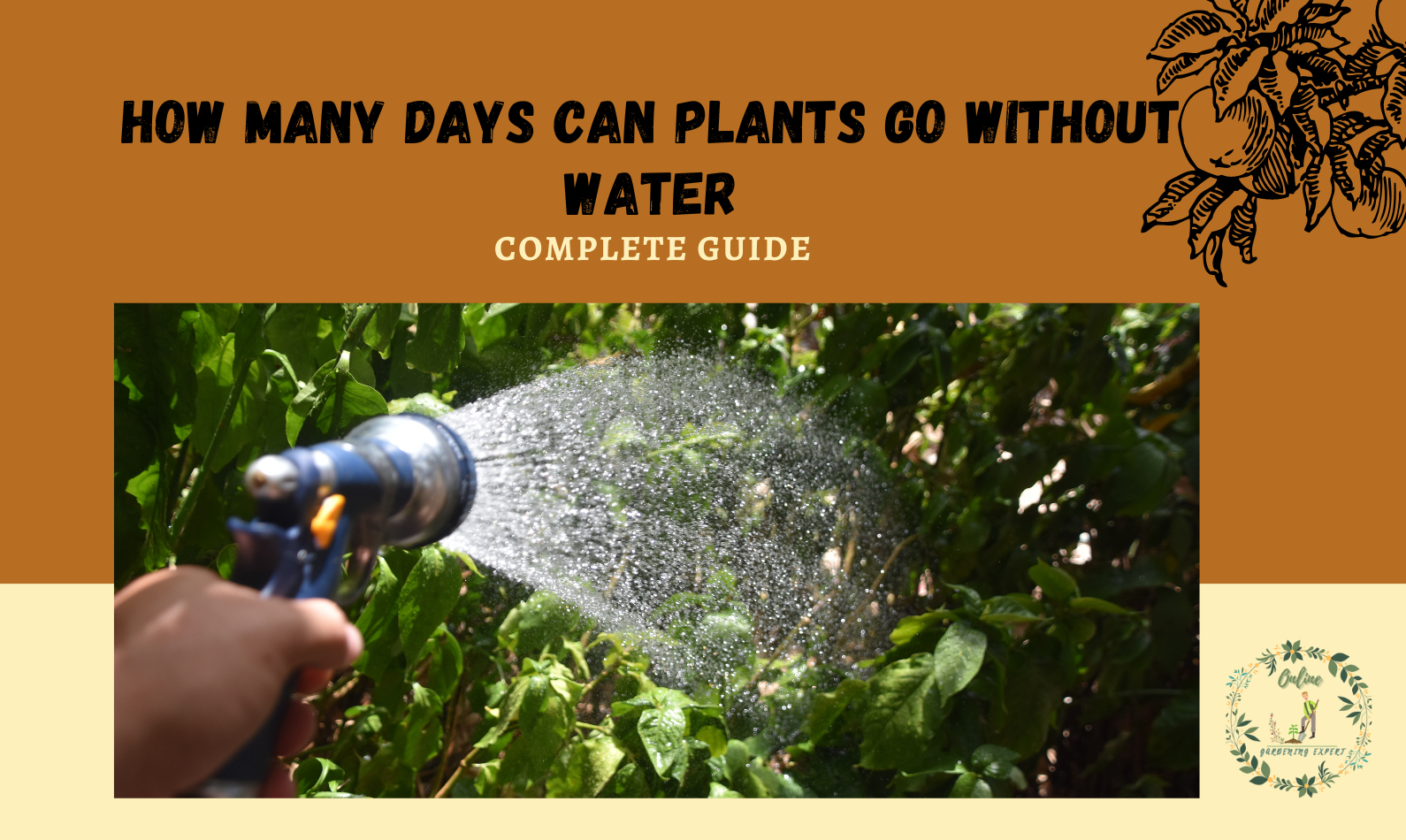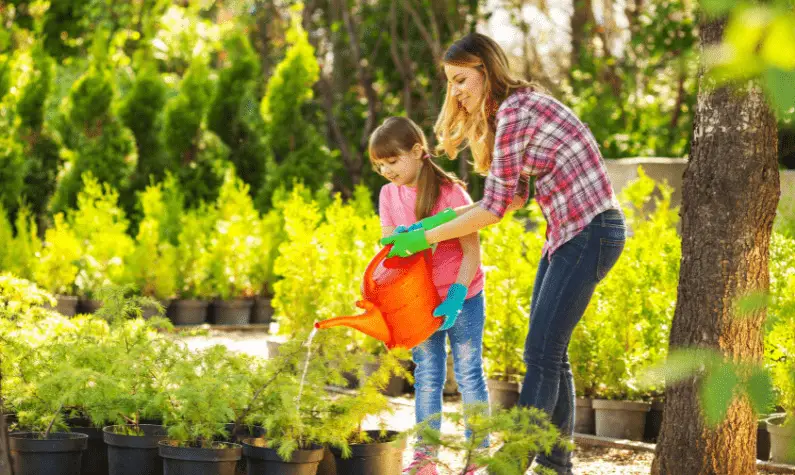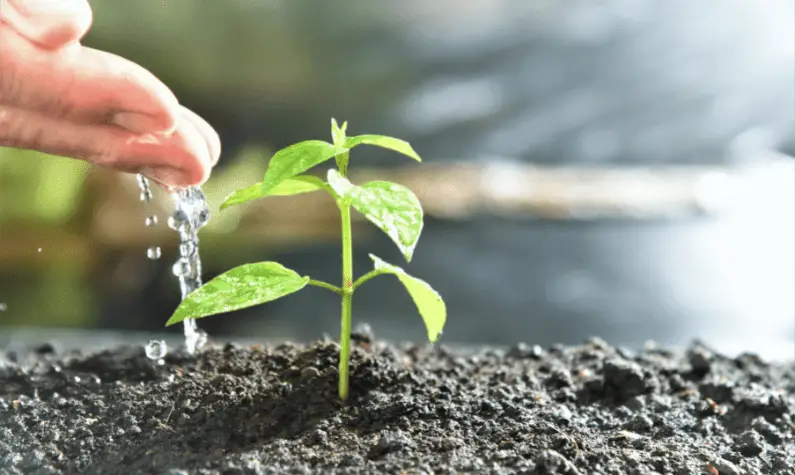How Many Days Can Plants Go Without Water: You are aware that it is critical to water plants, but we all forget or don’t have the time from time to time. Alternatively, we may be completely unaware that the plant needs water.
Typical fully-grown plants can go for up to a week without water before showing signs of stress. If you have a succulent, you may go months without watering it. If you have a dormant plant, you can go weeks without watering it, but fruit, vegetable, and flowering plants will not last more than 4 to 7 days without water. All of the information is given below to assist you in understanding how many days your plants can go without water.
Contents
- How Many Days Can Plants Go Without Water?
- Type of Your Plant
- Plant Size and Maturity Level
- Type of Soil Where Your Plant is Planted
- Environment Where You Are Growing The Plant
- Growth Stage of the Plant
- Growing Space Available to the Plant
- Conclusion
- What happens if the plants don’t get water for many days?
- Can plants recover from lack of water?
How Many Days Can Plants Go Without Water?
Type of Your Plant
If you want to know how long your plant will survive without water, the sort of plant you’re cultivating is the most significant thing to consider.
Cacti, for example, can survive for months or even years without the need for watering if they are grown in a dry environment. If the succulents are grown outside, they will persist for two years without needing to be watered.
If the succulents are kept indoors, you will need to water them more frequently, though they can survive for several months without being watered.
Some plants are drought-tolerant, which means they will survive for several weeks even if they are not given any water. Native flora in your area is typically drought-tolerant, as is the case around the world. Native plants may survive for several weeks without water if they live in an arid environment, common in the United States.
Some plants will fall into dormancy if they do not receive enough water. They go dormant to withstand droughts, but they will live for a more extended period if you water them. The plants will be dormant for several weeks and may appear to be dead during this time. On the other hand, their roots are still alive and will recover once the plant is re-watered again.
Plants that produce fruits, vegetables, and flowers are the most vulnerable because they require a lot of resources. For these plants to thrive, they require a constant flow of water.
If such plants do not receive the necessary water for a couple of days, they will begin to show symptoms and will begin to slow down their growth rate. Unless these plants receive water for a week or two, they will begin to wilt and eventually die.
Plant Size and Maturity Level
When it comes to how long your plant will stay without being watered, the size of your plant will affect how long it will last. The smaller the plant’s physical size, the less water it needs to survive. The greater the size, the greater the amount of water required.
Because the larger plant has significantly more leaves, it will require significantly more water to provide food for growth and maintenance.
The age of the plant will determine the amount of water required by the plant. Because it is still a seedling, the plant will require more frequent watering while in the developing period.
As the plant ages and becomes more established, it will require less regular watering since it will become more adept at absorbing and regulating water from the soil.
Type of Soil Where Your Plant is Planted
The type of soil you select to develop the plant will affect how long it will be able to hold onto its hydration. If the soil contains a high concentration of clay or other mineral clumps, it may be difficult for water to drain easily, and it may retain water for an extended period. If the water lingers in the soil for an extended period, it might produce problems such as overwatering.
When there is a lot of sand in the soil, the water will drain fast since the particles are loose and have many spaces between them. The soil cannot hold on to the water, and it seeps into the ground below the surface. This can result in difficulties such as underwatering, in which the roots are unable to collect the necessary moisture before the soil dries up completely.
You want the soil to have the proper combination of organic matter, clay, and sand so that it can retain enough moisture while also draining away excess moisture from the plant.
In the case of a container plant, you’ll need to apply potting soil to keep it alive. This is a sterile medium with a porous texture that is lightweight and easy to handle. It will allow water to drain far more quickly than garden soil.
Environment Where You Are Growing The Plant
The location of your plant impacts how much water you must provide it. If the plant is kept indoors, it will be better protected and will require less water. If the plant is left outside in hot weather, it will require significantly more water. However, you will not need to water the plant as frequently if the temperature is cool.
Warm-season plants will require significantly more water than their cool-season counterparts since the heat will cause the soil to dry up more quickly. Growing cool-season plants will not present this challenge because the soil will keep moisture for a significantly longer period.
If the plant is growing in a container, it will require more water because the roots will not be able to extend as widely. Plants grown outside can send their roots deep into the ground in quest of moisture.
Other factors will impact how much and how frequently you need to water your plant. Things like humidity and wind conditions are included in this category. A high level of humidity will cause the plants to dry out more quickly. If a chilly breeze blows through the plant’s foliage, the same thing will happen.
Growth Stage of the Plant
If you’re growing seeds or seedlings, the plant will require a lot of water during the germination process and the development of its roots, and the formation of its initial set of leaves. The plant requires less water once it has reached maturity since it has learned to take moisture from the soil and use it efficiently.
Flowering, veggie, and fruiting plants necessitate a large amount of water since they demand more nutrients than nonflowering plants. As soon as the growing season comes to an end, the plant either begins to die or goes into dormancy. In the end, it will use less water as a result.
Growing Space Available to the Plant
The plants in your garden will take up water from the earth as they grow. When the roots are thirsty, they will reach deep into the earth in an attempt to locate hydration. Wherever your plants are planted, they will be able to send roots deep into the soil in quest of moisture. If you’re growing in a raised bed, the depth of your plants is restricted by the depth of the bed you built.
If you are growing the plants in a container, they will be restricted to the potting soil in order to obtain the necessary moisture. You must ensure that the potting soil includes the appropriate amount of moisture for the roots, as they demand it.
It’s also a good idea not to have the plants growing too near to one another. Maintaining a reasonable space between the plants would be preferable based on their requirements. A failure to do so means that the roots of the plants will compete with one another for moisture from the soil.
Conclusion
How long your plant can go without water depends on many factors. Especially what type of plant you want, what stage of maturity they are now, what type of soil you are giving, what is the weather condition and many more. This article has provided the information you need to learn about how long plants can go without water. Apart from that, we also have provided the answers to frequently asked questions. Hope you will be benefitted from this article and take care of your plants better than ever!
Frequently Asked Questions (FAQ)
What happens if the plants don’t get water for many days?
If you haven’t given your plants enough water for a number of days, they will begin to show indicators that you should be looking out for. The most typical symptom is that the leaves begin to wilt as the plant attempts to concentrate its important nutrients and limited water in the root and stem.
The leaves will also begin to yellow as a result of the plant’s inability to absorb nutrients and moisture from the surrounding soil. After a few days of not receiving enough water and nutrients, they will dry and fall off.
When there is not enough moisture left in the soil, the soil will begin to dry and fracture as a result. If the potting soil contains peat moss, it may even become compacted and difficult to work with. This is because the material becomes hydrophobic after being exposed to water for a period of several days.
If the plant does not receive the necessary amount of moisture, the roots will be unable to provide nutrients, moisture, and oxygen to the leaf. The plant’s growth will be hindered as a result of this.
Can plants recover from lack of water?
The extent to which a lack of water damages plants determines whether or not they will recover.
If you have neglected to water the plant for a few days, it is likely that it will recover. However, if you’ve neglected them for several weeks, it’s possible that they’ll be too damaged to recover.
A succulent plant may survive without water for several months, and you don’t have to be concerned about it dying or dying. I’m talking about your regular plants that can’t survive for more than a few days or weeks without water.
Taking away any undesirable leaves and stems from the plant should be your first order of business. Foliage that has turned yellow or brown is included in this category. You don’t want the plant to expend all of its energy on this type of vegetation. However, it should focus its emphasis on recovery.
You should check to see if the soil has not become hard and incapable of absorbing water. If it has hardened, you will need to rehydrate it to restore its hydrophilic properties.
If you’re working with garden soil, you’ll need to poke some holes into it. Once this is done, let a gentle drip of water penetrate into the soil for several hours to assist it in regaining its hydrophilic condition.
If the plant is in a container and you are able to raise it, you should immerse the container in a tub of water for at least 30 minutes. This will aid in the absorption of water by the potting soil and restore its hydrophilic state.
The soil can be thoroughly irrigated once it has regained its moisture-retention capacity and has been sufficiently dried out.
If the plant is in a container, make sure to water it thoroughly until the water drains out of the drainage holes at the bottom of the container.
Over the next several days, keep an eye on the plant to see if there are any indications of recovery. Continue to water the plant as soon as the soil becomes dry.
In order to check for moisture in the soil, insert your finger 1-2 inches into the soil. If the tip of your finger is completely dry, it’s time to give the soil a thorough watering.
It is likely that the plant has been harmed beyond repair and will die if no signs of recovery are seen after a couple of weeks.



